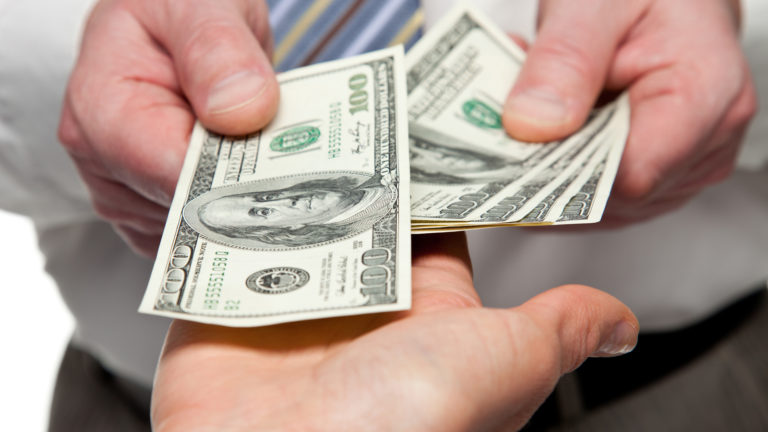Gas price predictions can be dicey, but from my perspective we’re in for higher prices this summer. Gas prices surged at the beginning of the year, straining budgets and complicating inflation control efforts.
Nationwide, average unleaded regular gas prices rose by about 14%, over 40 cents per gallon. Utah saw a 60-cent increase, Alaska 55 cents, and Oregon 43 cents. Analysts noted these hikes are typical in spring due to increased travel and costlier summer fuel blends.
In early March, the national average for gas prices zoomed past $3.50 due to nonstop geopolitical tensions and surging oil prices. Although there has been a slowdown in the increase, experts see a long-term decline, but it won’t happen soon.
Western states, notably California, Hawaii, and Washington, bear the highest average prices, surpassing $4.50 per gallon.
As of March 22, the national average for gas was $3.53 per gallon, up $0.26 from the previous month, reports AAA.
Gas prices rose steadily, climbing nearly $0.10 in the past week due to elevated oil prices and declining inventories, indicating potential further increases for drivers.
Expect Gas Prices to Rise More

I’m not the only one making gas price predictions like this. Andrew Gross from AAA stated, “Prices typically rise in spring,” attributing it to increased spring break travel.
Patrick de Haan, GasBuddy’s petroleum analysis head, concurred, mentioning higher gasoline usage. This coincides with refineries transitioning to pricier, eco-friendly summer fuel blends to adapt to changing weather conditions.
From January to March, gas prices have been continuously surging, rising around 50 cents. Although gas prices in 2024 have been slightly higher than last year, experts see a gap to narrow as price hikes slows down.
Unfortunately, this uptick in costs is challenging for American consumers, as inflation saw a rise in February, according to Bureau of Labor Statistics data.
Last month, energy and housing costs surged, comprising over 60% of the overall price increase.
It remains above the Federal Reserve’s target despite inflation cooling from its peak. Analysts warned of potential further gasoline price hikes due to rising crude oil prices driven by supply constraints and geopolitical tensions.
De Haan warned of potential refinery disruptions in Louisiana and Texas during the Atlantic hurricane season from June to November.
He doesn’t foresee the national average exceeding $4 a gallon, despite anticipating further price increases as summer approaches. However, as temperatures drop in the fall, the spike in consumption is expected to reverse, bringing gas prices back down by the end of the year.
Factors in These Gas Price Predictions

Crude oil constitutes over half of consumers’ gasoline expenses, notes the Energy Information Administration. Oil demand and production targets set by major oil producers like OPEC+ and OPEC+ heavily influenced fluctuations in gas prices.
As of March 22, West Texas Intermediate crude oil futures hovered around $81 per barrel, while Brent crude traded near $85, marking a $10 increase since the year began.
OPEC+ recently extended production cuts of 2.2 million barrels per day through the second quarter, driving oil prices up further.
Recent geopolitical tensions have influenced price surges. Increased drone attacks on Russian refineries by Ukrainian forces disrupted operations, spiking global crude prices.
Ongoing assaults by Iran-backed Houthis on Red Sea vessels prompted companies to steer clear of the region, impacting oil transport. Analysts closely monitor Middle Eastern developments, aware of their potential to alter oil market dynamics swiftly.
Crude oil prices aren’t the sole determinant of gas prices, with factors like seasonal maintenance, refining, and distribution playing significant roles. Refineries face heightened pressure during this period as they transition to producing summer-grade gasoline amidst increasing demand.
Typically, gasoline prices surge in spring as more drivers hit the road after winter, compounded by state and federal gas taxes. California has the highest tax at $0.51 per gallon, and Alaska has the lowest at $0.09.
Oil Boom Under Biden Administration
Although there have been debates on counter-intuitive fossil fuel hikes during Biden’s administration, it became apparent that global oil and gas markets can work independently from to the White House’s Influence.
Russia’s war with Ukraine drove gas prices up, which led to skyrocketing oil profits for producers globally, including those in the United States.
The economic recovery after COVID-19 also increased demand for fossil fuels, leading to more substantial profits for more prominent companies such as Exxon Mobil (NYSE:XOM), Shell (NYSE:SHEL), BP (NYSE:BP), and others.
Most of these companies saw a 100% increase in profits compared to the first three years of Donald Trump’s presidency.
The post-COVID economic recovery also spurred demand for fossil fuels, resulting in substantial profits for major oil companies like BP, Shell, Exxon, Chevron, and TotalEnergies, which saw a 100% increase in profits compared to the first three years of Trump’s presidency.
Bottom Line
The economy saw a 2% increase for U.S natural gas futures in March alone, and this is because of the forecasts of colder weather and heating demand in weeks to come. Traders are also aware of a decline in the U.S output, which followed a decrease in gas prices to a 3-½ year low last February, boosting futures.
Oil and gas prices may remain sticky for some time, leading to higher prices at the pump. In combination with spring driving season, commuters may want to get prepared to see higher numbers than usual on their weekly gas station trips. Unfortunately, that appears to be what we’re in for this April.
On the date of publication, Chris MacDonald did not have (either directly or indirectly) any positions in the securities mentioned in this article. The opinions expressed in this article are those of the writer, subject to the InvestorPlace.com Publishing Guidelines.
